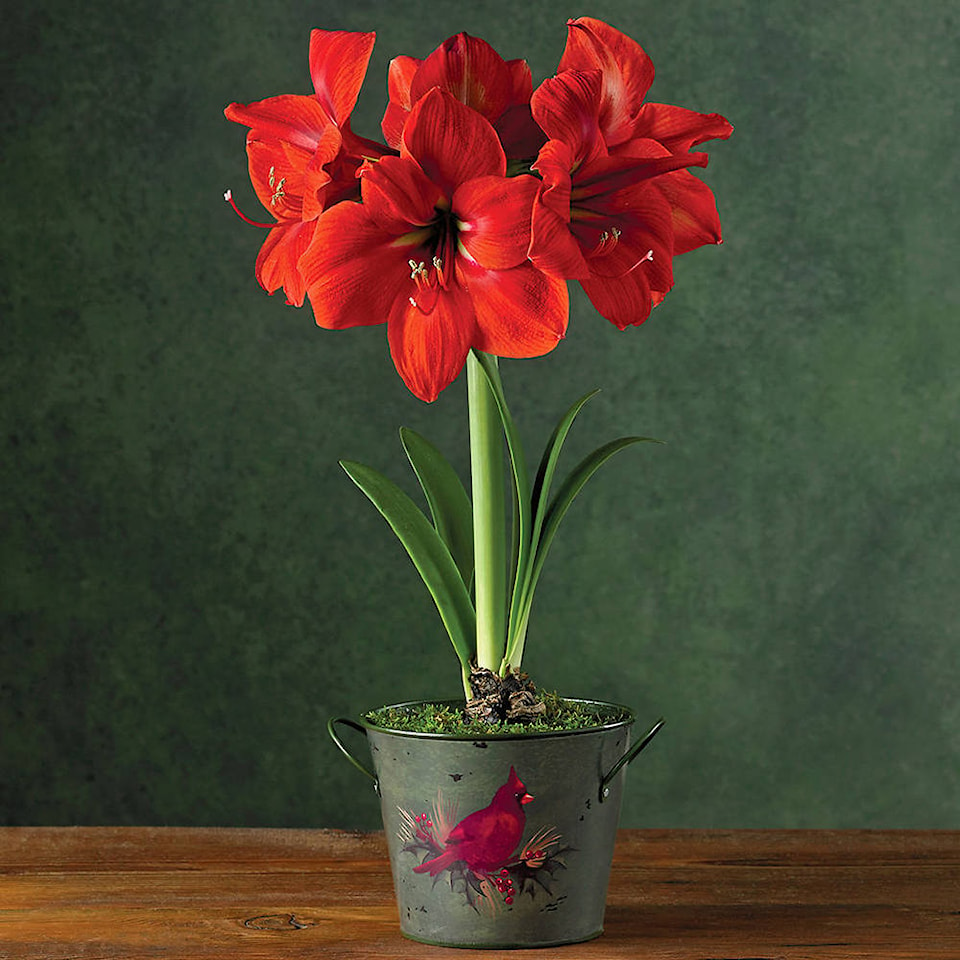Brian Minter
Special to The Progress
Hyacinths, ‘Paperwhite’ narcissus and amaryllis are winter delights to enjoy in our homes when the weather has transformed our outdoor gardens into cold, grey, bleak winterscapes. These ‘indoor’ bulbs are specially prepared to bloom easily indoors. The trick, however, is to create the very best conditions for optimum flowering over the longest period of time.
Some of the easiest bulbs to bring to bloom are fragrant ‘prepared’ hyacinths. Available in red, white, pink, blue and purple, they are generally larger-sized bulbs and produce the largest flowers. It works well to pot them up as singles or triples in 4 or 6-inch (10 or 15cm) pots, especially if you use contemporary-styled decorator pots. Most folks prefer to use either a hyacinth vase, which holds the bulbs on top allowing the roots to filter down into the water or a clear glass rose bowl with colourful rocks holding the bulbs up and in place, while the roots feather down to the water below the rocks. Whatever way you choose to set them out, remember the display is half the artistic value.
‘Paperwhite’ narcissus are the most popular indoor bulbs perhaps because a narcissus blooming indoors reminds us their outdoor cousins will be doing the same come spring. The display you design with these bulbs is where the true fun begins. I love to create beautiful presentations using tall, cylindrical, clear vases with colourful stones on the bottom, water below and the bulbs nesting on top. Shallow, coloured glass containers work well too, as long as you can see the lovely white roots developing. Another great way to display them is planted in tall, thin, clay pots with green moss over the soil and red huckleberry twigs placed in the pot to accent and support the stems as they grow.
For success with hyacinths and ‘Paperwhites’ give these bulbs a cool start 5°C to ensure the slow development of good roots and sturdy stems and leaves. You’ll destroy the beauty of these flowers if you let them rocket out of the bulbs. Start them near a cool window, outside on the patio if temperatures are above freezing or even in your fridge until the roots have formed and the stems are just emerging with the flower head inside. With a cool start, they will be much more attractive, and as they grow, try to keep them as cool as you can for the longest enjoyment.
Amaryllis are the granddaddy of all indoor flower bulbs, and probably the most spectacular. It is important to start with larger bulbs, ones measuring about 11-inches (29cm), to guarantee good flower stems. To double your enjoyment, select 13-inch (34cm) size bulbs, and you should expect two blossom stems. The colour range now available is quite remarkable, from reds, oranges, pinks and whites to bi-colours. If you want to try something a little different, quite a few species types, with unique colours (like green), flower sizes and forms, are now available. The new ‘Nymph’ series have fully double blossoms.
For the best results with amaryllis, plant the bulbs in a pot just large enough to accommodate the particular size that you have and no more. About 25-30% of the bulb should be above the soil. It’s always wise to use well-drained soil to prevent root-rot from over-watering. They require a well-lighted location, temperatures of 22 to 24°C, and no feeding is necessary at this point in their growing cycle. Again, it is best to bring them along slowly in order to develop compact, sturdy stems. Their leaves may or may not open easily, but don’t be concerned – what’s important is to have nice strong stems. As they begin to flower, you can extend their bloom time by keeping them cool, around 12 to 18°C. Some growers even put them in floral coolers to hold them back. Keep them just moist. When each stem finishes blooming, cut it off, but let the leaves grow. Keep them in a cool window until they can go in the garden next spring.
